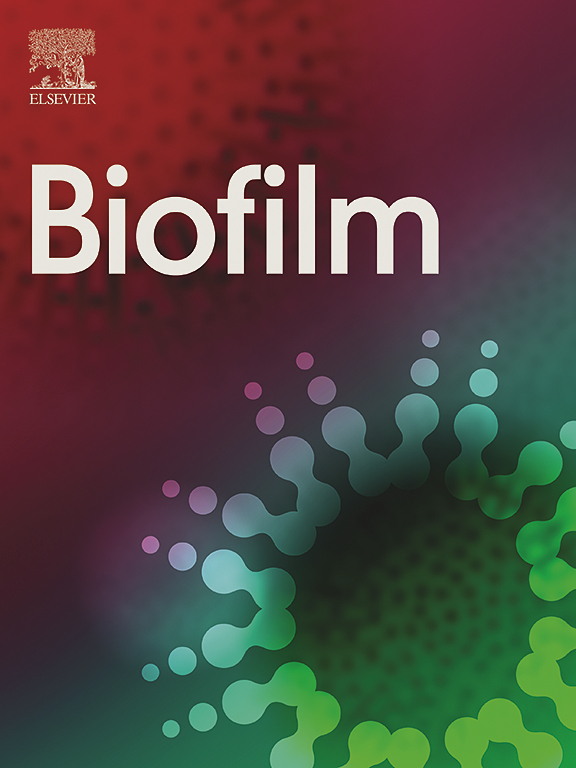Correlative Imaging and super resolution microscopy studies reveal complexities in determining live-dead state of bacteria
IF 4.9
Q1 MICROBIOLOGY
引用次数: 0
Abstract
Imaging techniques are widely used to determine the physiological state of bacterial cells and provide an important platform for antibacterial evaluation in biofilms research. The commercial counter-staining SYTO 9 – propidium iodine kit is a popular choice for viability studies, with cell membrane damage due to antimicrobial action leading to replacement of the SYTO 9 dye with propidium iodine. This study investigates the live-dead state of cells in early-stage Staphylococcus aureus biofilms using correlative Fluorescence Microscopy (FM), Scanning Electron Microscopy (SEM) and super resolution Structural Illumination Microscopy (SIM). Correlative imaging data obtained at the single-cell level show that the physiological states of individual bacterial cells indicated by the SYTO 9 – propidium iodine counterstain in FM does not correlate directly with the detailed cell morphology observed by SEM. In addition, SIM was used to map sub-cellular distributions of SYTO 9 – propidium iodine dyes within single cells and revealed greater complexity than hitherto assumed, with 4 different cell-states identified, including double-stained ones and those where SYTO-9 is bound to substances at the cell perimeter. With this knowledge, we present ternary plots to illustrate the significant impacts of this complex staining behaviour on underestimation of cell-membrane damage due to antimicrobial actions and, thus, overestimation of bacterial survival rate in biofilms research.
相关成像和超分辨率显微镜研究揭示了确定细菌活死状态的复杂性
在生物膜研究中,成像技术被广泛用于确定细菌细胞的生理状态,为抗菌评价提供了重要的平台。商业反染色SYTO 9 -丙啶碘试剂盒是活力研究的流行选择,由于抗菌作用导致细胞膜损伤,导致用丙啶碘替代SYTO 9染料。本研究利用相关的荧光显微镜(FM)、扫描电镜(SEM)和超分辨率结构照明显微镜(SIM)研究了早期金黄色葡萄球菌生物膜中细胞的活死状态。在单细胞水平上获得的相关成像数据表明,FM中SYTO 9 -丙碘反染所显示的单个细菌细胞的生理状态与扫描电镜观察到的详细细胞形态不直接相关。此外,SIM用于绘制单个细胞内SYTO 9 -丙碘染料的亚细胞分布,揭示了比迄今为止假设的更大的复杂性,鉴定了4种不同的细胞状态,包括双染色和SYTO-9与细胞周缘物质结合的细胞状态。有了这些知识,我们提出了三元图来说明这种复杂的染色行为对微生物作用引起的细胞膜损伤的低估的显著影响,从而高估了生物膜研究中的细菌存活率。
本文章由计算机程序翻译,如有差异,请以英文原文为准。
求助全文
约1分钟内获得全文
求助全文

 求助内容:
求助内容: 应助结果提醒方式:
应助结果提醒方式:


